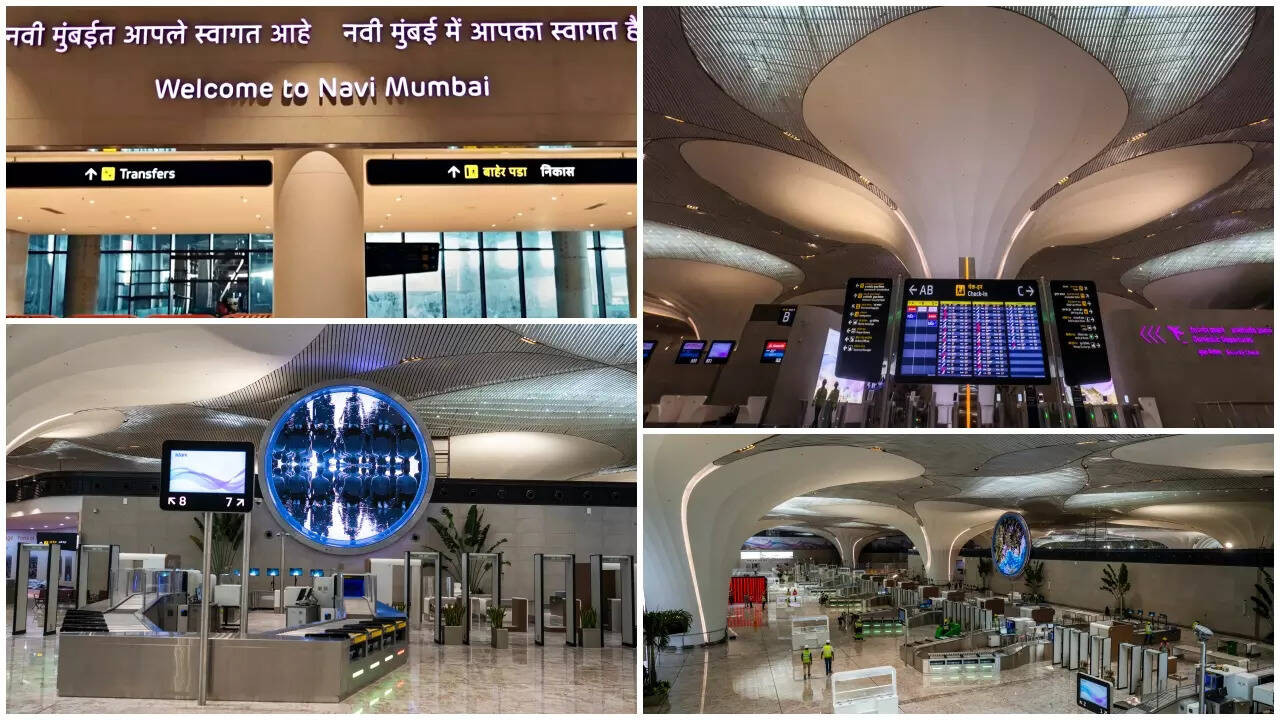Soaring High: Navi Mumbai International Airport Set to Transform Air Travel
Forget endless commutes to the city – the future of flying in the Mumbai Metropolitan Region is taking shape right across the harbor. The Navi Mumbai International Airport (NMIA), a project years in the making, is finally poised to redefine air travel, and anticipation is building to a fever pitch. This isn’t just another airport; it’s a gateway to a new era of connectivity, economic growth, and convenience for millions.
The project, a massive undertaking of engineering and vision, promises to ease the burden on the existing Chhatrapati Shivaji Maharaj International Airport (CSMIA), which has long struggled to keep up with the ever-increasing demands of a bustling metropolis. But what exactly can we expect from this game-changing infrastructure project? Let’s delve into the details.
A New Gateway Takes Flight: Location and Accessibility
Strategically located in Navi Mumbai, the airport boasts excellent connectivity to the city and surrounding regions. Its proximity to major highways and the upcoming Mumbai Trans Harbour Sea Link will drastically reduce travel times, making it a significantly more accessible option for a vast swathe of the population. Imagine skipping the notorious Mumbai traffic and effortlessly reaching the airport – a dream poised to become reality. The area is developing rapidly, with improved roads and public transport links expected to make accessing the Navi Mumbai International Airport seamless.

Phased Development, Exponential Growth
The NMIA is being developed in phases, ensuring a smooth and scalable rollout. The initial phase will see the airport capable of handling a significant number of passengers annually, with plans to expand capacity dramatically in subsequent phases. This measured approach allows for continuous improvement and adaptation to evolving demands, positioning NMIA as a future-proof aviation hub. Once fully complete, the airport is projected to handle tens of millions of passengers each year, solidifying Mumbai’s position as a major global aviation center. The long-term vision includes multiple terminals, state-of-the-art cargo facilities, and dedicated spaces for general aviation.
World-Class Infrastructure and Design
Prepare to be impressed. NMIA is designed to be a world-class facility, incorporating cutting-edge technology, sustainable practices, and a passenger-centric approach. Expect spacious terminals, efficient baggage handling systems, seamless check-in processes, and a wide array of retail and dining options. The focus is on creating a stress-free and enjoyable travel experience from the moment you arrive. The design embraces green building principles, incorporating energy-efficient systems and maximizing natural light to minimize its environmental footprint.
Economic Impact and Job Creation
The impact of the NMIA extends far beyond just air travel. The project is expected to be a major catalyst for economic growth, attracting investment, creating jobs, and boosting tourism in the region. It will also improve connectivity for businesses, facilitating trade and commerce. From construction workers to airline staff, the Navi Mumbai International Airport will stimulate job creation across various sectors, positively impacting the local economy and enhancing opportunities for the community.
The Future of Air Travel is Here
The Navi Mumbai International Airport is more than just bricks and mortar; it’s a symbol of progress, ambition, and a commitment to a brighter future. As the launch date nears, the excitement is palpable. The new airport promises to transform air travel in the Mumbai Metropolitan Region, providing a world-class experience, boosting the economy, and connecting millions to destinations around the globe. It’s time to fasten your seatbelts – the future of flying is about to take off.
Thinking about a seamless transfer to other destinations in India? Explore our guide to hassle-free [domestic flight booking](/domestic-flight-booking).
The Navi Mumbai International Airport’s imminent opening marks not just the culmination of a massive infrastructure project but also the dawn of a new chapter for travel and commerce in the region. With its state-of-the-art facilities, strategic location, and phased expansion plans, it’s poised to become a vital artery connecting India to the world, and a testament to ambitious infrastructural development.







